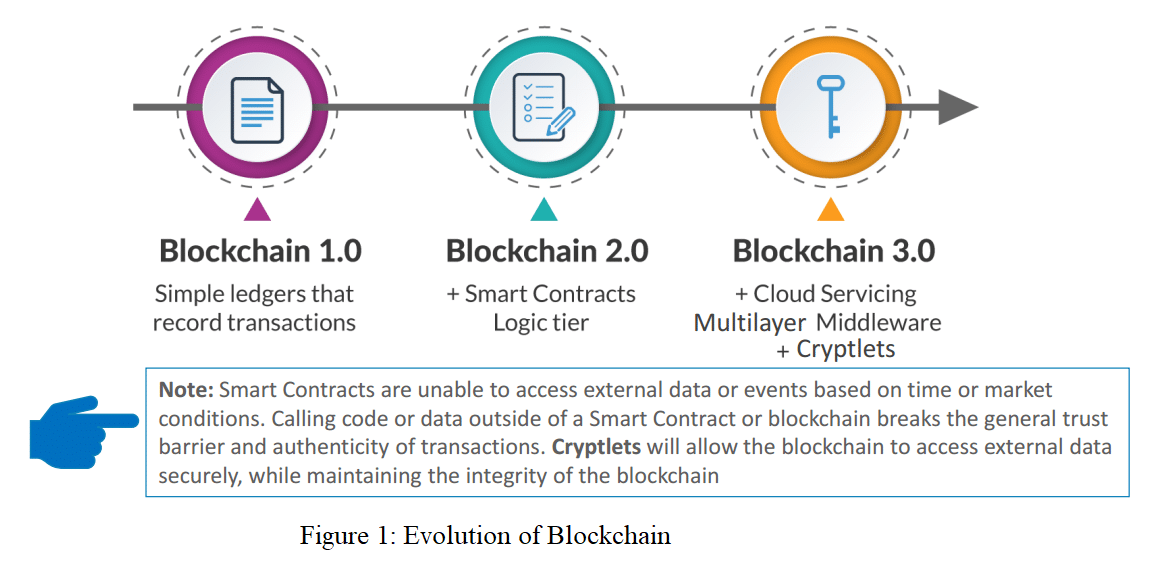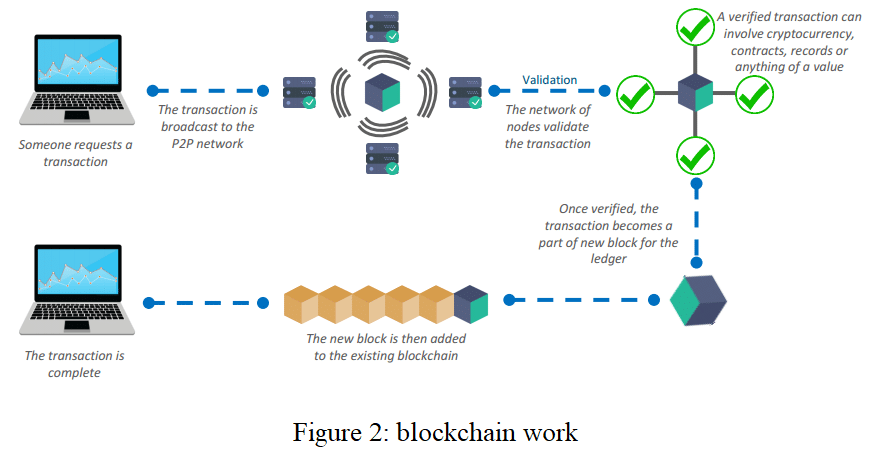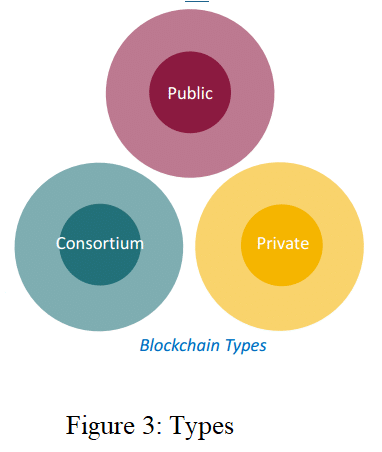Blockchain is a way of storing data that makes it difficult or impossible for the system to be altered, hacked, or otherwise manipulated. It is a type of distributed ledger that distributes and copies transactions among the network of computers involved. Let’s take a quick look at all that it entails.
Blockchain technology is a system for storing public transactional records, also known as blocks or ‘chains’, across multiple databases that are linked by peer-to-peer nodes. Termed as a ‘digital ledger’ this storage method ensures transaction authenticity through the owner’s digital signature, offering protection against fraud. Consequently, the data in the digital ledger is extremely secure. In simpler terms, the digital ledger can be likened to a Google spreadsheet shared among many computers connected to a network, where transactional records are kept in accordance with actual purchases. The data can be seen by anyone, but nobody can alter it, which is an intriguing aspect.
Blockchain 1.0 (cryptocurrency)
Spearheaded by Hall Finley, Blockchain Version 1.0 emerged in 2005 as the inaugural implementation of distributed ledger technology (DLT) within the realm of cryptocurrency. This development facilitated financial transactions rooted in blockchain or DLT, with Bitcoin as its enabling vehicle. Notably, Version 1.0 is characterised by its permissionless nature, allowing any participant to engage in valid Bitcoin transactions. This iteration finds its primary utility in the domains of currency and payments.
The overarching goal of Blockchain 1.0, also referred to as Blockchain Version 1.0, was to usher in a transparent, publicly accessible, fully decentralised, immutable ledger, and a distributed transaction system within the global financial landscape. It takes its foundational cues from the concept and structure of Bitcoin, with a primary emphasis on the genesis of novel cryptocurrencies. Blockchain 1.0 is often described as a digital, decentralised, distributed ledger that meticulously records transactions within a universally shared database. These records are updated by blockchain miners, and collectively overseen and maintained by all participants, without any single entity claiming ownership.

Blockchain 2.0 (smart contracts)
The introduction of Blockchain Version 2.0 stemmed from inherent issues found in its predecessor, Version 1.0. Notably, Version 1.0 faced challenges related to the resource-intensive nature of Bitcoin mining and a notable lack of network scalability. Version 2.0 was conceived as a means to rectify these shortcomings.
In this upgraded iteration, blockchain extends its functionality beyond merely handling cryptocurrencies to encompass smart contracts. These smart contracts can be likened to compact computer programs residing within the interconnected blocks of the chain. They autonomously execute predefined conditions, such as facilitation, verification, or enforcement, thus streamlining processes and enhancing transaction cost efficiency.
One significant shift in Blockchain 2.0 involved replacing Bitcoin with Ethereum as its foundational cryptocurrency. This transition proved highly successful, enabling Blockchain 2.0 to efficiently process a substantial volume of transactions on the public network with remarkable speed.
Blockchain 3.0 (DApps)
Version 3.0, that followed Version 2.0, features the inclusion of DApps, commonly known as decentralised applications. These DApps resemble traditional applications in that they can have a frontend coded in any language, facilitating communication with their backend. However, what sets them apart is that their backend operations are executed within a decentralised peer-to-peer network. They harness decentralised storage and communication mechanisms, such as Ethereum Swarm, to function.
DApps are inherently decentralised, devoid of a single owner or central authority, ensuring several key advantages, including transparency, heightened security, universal data accessibility, absence of censorship, and a flexible development environment. The adoption of DApps brings forth numerous benefits, including uninterrupted operation (zero downtime), robust privacy protection, data integrity assurance, and trustworthy, yet secure, communication for various purposes such as business and transactions.
Why is blockchain important?
Transparency and trust: Blockchain ensures transparency and an immutable record of transactions, making it difficult to alter or manipulate data. This transparency and immutability build trust among participants and eliminate the need for intermediaries, reducing costs and increasing efficiency.
Security: Blockchain uses cryptographic algorithms to secure transactions and data. The decentralised nature of blockchain networks makes them resilient to hacking and fraud attempts. This enhanced security is crucial for applications like financial transactions, supply chain management, and identity verification.
Decentralisation: Blockchain operates on a distributed network of computers or nodes, eliminating the need for a central authority or intermediary. This decentralisation ensures that no single entity has control over the network and reduces the risk of single points of failure or censorship.
Innovation and disruption: Blockchain technology has the potential to disrupt traditional industries and business models by introducing new ways of transacting, storing data, and executing contracts. It enables the development of decentralised applications, smart contracts, and new financial instruments, fostering innovation and opening up new business opportunities.

How does blockchain work?
The developments in blockchain are relatively nascent, yet they harbour the potential to bring about revolutionary changes in the future. So, let’s start the process of analysing this technology as shown in Figure 2.
Blockchain comprises a synergy of three key technologies:
1. Cryptographic keys
2. A peer-to-peer network housing a shared ledger
3. A computational framework for storing the network’s transactions and records
Cryptography keys, comprising the private and public keys, are foundational to blockchain. These keys play a crucial role in facilitating secure and prosperous transactions between two parties. Every individual possesses both these keys, deploying them to establish a robust and unassailable digital identity reference, an element of paramount significance within the blockchain framework.
In the realm of cryptocurrency, this digital identity takes the guise of a ‘digital signature’, a term widely employed to authorise and oversee transactions. The digital signature seamlessly integrates into the peer-to-peer network, where a diverse community of individuals collectively act as governing authorities. These individuals employ digital signatures to achieve consensus on various facets.
Upon receiving authorisation, a transaction undergoes meticulous mathematical verification, culminating in a successful and secure transaction between the interconnected parties within the network. In essence, blockchain users wield cryptography keys as they engage in a myriad of digital interactions across the peer-to-peer network.
Here’s a use case that illustrates how blockchain works.
Hash encryption: The SHA256 algorithm secures data through hashing and encryption in blockchain technology. It transmits information about the sender’s address (public key), the recipient’s address, the transaction, and his or her private key. After verification, the hashed data is sent across the globe and added to the blockchain in encrypted form. The sender and receiver’s authentication is made easier by the SHA256 algorithm’s virtually impenetrable hash encryption.
Proof of work: Each block in a blockchain has four main headers.
- Previous hash: The previous block can be found at this hash address.
- Transaction details: Information about each transaction that must take place.
- Nonce: In cryptography, an arbitrary number is used to distinguish the block’s hash address.
- Hash address of the block: A hashing algorithm transmits the preceding hash, transaction information, and nonce. The output value with a length of 64 characters and 256 bits is referred to as the distinct ‘hash address’ or block hash.
Numerous people around the world try to figure out the right hash value to meet a predetermined condition using computational algorithms. The transaction completes when the predetermined condition is met. In simpler terms, blockchain miners solve a mathematical puzzle, known as a proof of work problem. Whoever solves it first gets a reward.
Mining: The act of appending transactional data to the existing digital public ledger is commonly known as ‘mining’. Although this term is closely linked to Bitcoin, it extends its application to other blockchain technologies. The mining process entails the creation of a block transaction’s hash, a highly secure and tamper-resistant mechanism. This process safeguards the entire blockchain network, eliminating the requirement for a centralised system.

Types of blockchains
There are primarily three types of blockchains.
Public blockchain: Public blockchains are open and permissionless, meaning anyone can participate in the network, validate transactions, and create new blocks. They are decentralised and rely on a consensus mechanism, usually proof of work (PoW) or proof of stake (PoS), to validate and add new blocks. Bitcoin and Ethereum are examples of public blockchains. Public blockchains provide transparency and security but may have scalability limitations due to their openness.
Private blockchain: Private blockchains, also known as permissioned blockchains, are restricted to a specific group of participants. These participants are known and trusted, and they are given permission to access and validate transactions on the network. Private blockchains are often used by businesses or organisations for internal purposes, such as supply chain management or record-keeping. They provide greater control and privacy compared to public blockchains but sacrifice some decentralisation.
Consortium blockchain: Consortium blockchains are a hybrid between public and private blockchains. They are managed and operated by a group of organisations or entities working together in a consortium. Consortium blockchains offer a more decentralised approach compared to private blockchains while maintaining a level of control among the consortium members. They are often used in industries where multiple stakeholders need to collaborate, such as banking consortia or supply chain networks.
Where is blockchain used?
Blockchain technology has a wide range of uses across various industries.
- Cryptocurrencies: Blockchain technology is most commonly associated with cryptocurrencies like Bitcoin and Ethereum. It enables secure and transparent peer-to-peer transactions without the need for intermediaries like banks.
- Supply chain management: Blockchain can be used to track and trace the movement of goods across the supply chain. It provides real-time visibility, enhances transparency, and ensures the integrity of data, reducing fraud, counterfeiting, and improving efficiency.
- Healthcare: Blockchain technology can securely store and share medical records, ensuring patient data privacy, interoperability, and accessibility. It can also streamline the process of clinical trials, drug traceability, and supply chain management in the healthcare industry.
- Finance and banking: Blockchain has the potential to revolutionise the financial sector by enabling faster, more secure, and cost-effective cross-border payments, remittances, and settlements. It can also facilitate identity verification, fraud prevention, and decentralised lending and borrowing platforms.
- Voting and governance: Blockchain can enhance the transparency, security, and integrity of voting systems. It enables verifiable and tamper-proof voting records, reducing the risk of fraud and ensuring fair and trustworthy elections.
- Intellectual property: Blockchain technology can be used to establish proof of ownership and protect intellectual property rights. It enables creators to securely register and manage their copyrights, patents, and trademarks, reducing infringement and facilitating licensing and royalty payments.
Pros and cons of blockchain
Even with all of its complexity, blockchain has virtually limitless potential as a decentralised method of record-keeping. Blockchain technology may very well have uses beyond those mentioned above, ranging from increased user privacy and heightened security to lower processing costs and fewer mistakes. There are a few downsides, though.
Pros
- Enhanced accuracy: Blockchain eliminates the need for human involvement in verification processes, leading to improved accuracy.
- Cost reductions: By eliminating the necessity for third-party verification, blockchain reduces operational costs.
- Decentralisation: Its decentralised nature makes tampering with blockchain data more challenging.
- Secure and efficient transactions: Blockchain ensures secure, private, and efficient transactions.
- Financial inclusion: It serves as a banking alternative and provides a means to secure personal information, particularly beneficial in countries with unstable or underdeveloped governments.
Cons
- Technology costs: Some blockchains incur significant technology expenses.
- Low transaction throughput: Blockchains often exhibit low transactions per second.
- History of illicit use: Blockchain has been associated with illicit activities, including those on the dark web.
- Regulatory variations: Regulation of blockchain varies by jurisdiction and remains uncertain.
- Data storage constraints: Blockchains may encounter limitations in data storage
capacity.
















































































